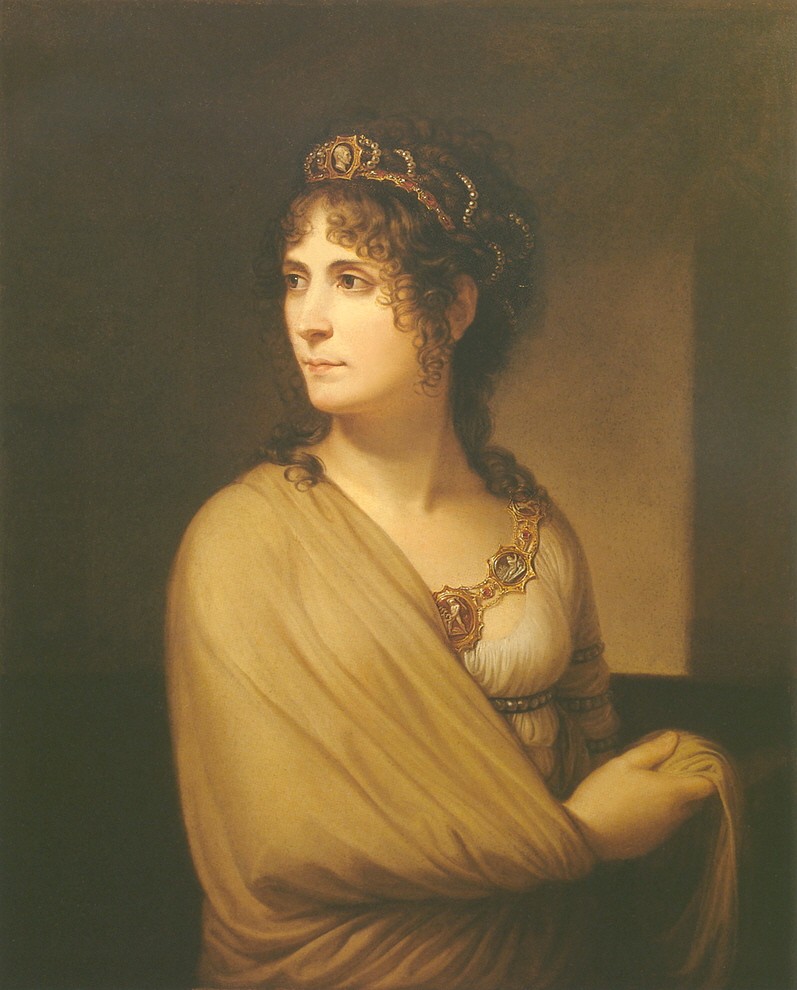© Unofficial Royalty 2024

Napoleon Eugene, Prince Imperial of France; Credit – Wikipedia
June 1, 1300 – Birth of Thomas of Brotherton, 1st Earl of Norfolk, son of King Edward I of England, at the Manor House in Brotherton, North Yorkshire, England
Thomas was the eldest of the three children of King Edward I of England and his second wife Margaret of France. He was the half-brother of King Edward II of England. Thomas and his first wife Alice de Hales are ancestors of the two beheaded wives of King Henry VIII, Anne Boleyn and Catherine Howard, who were first cousins.
Unofficial Royalty: Thomas of Brotherton, 1st Earl of Norfolk
June 1, 1815 – Birth of Prince Otto of Bavaria, first modern King of Greece, at Schloss Mirabell in Salzburg, Austria
Full name: Otto Friedrich Ludwig
Otto was the second son of King Ludwig I of Bavaria and Therese of Saxe-Hildburghausen. In 1832, the Convention of London established Greece as a kingdom, and Otto was appointed to be the new kingdom’s first king. While away from Athens in 1862, a coup led to the formation of a provisional government, and Otto was deposed. Otto accepted the situation, and he returned to Bavaria.
Unofficial Royalty: King Otto of Greece
June 1, 1819 – Birth of Francesco V, Duke of Modena and Reggio at the Ducal Palace in Modena, Duchy of Modena and Reggio, now in Italy
Francesco V was the last Duke of Modena and Reggio. He was also the Jacobite pretender to the thrones of England and Scotland from 1840 – 1875. In 1842, Francesco married Princess Adelgunde of Bavaria. The couple had one daughter who died in infancy. Francesco became Duke of Modena and Reggio upon the death of his father in 1846. King Vittorio Emanuele II of Sardinia and Giuseppe Garibaldi, a noted general and politician, led the drive toward a unified Italian kingdom. During the Second Italian War of Independence, Francesco V and his wife were forced to permanently flee the Duchy of Modena and Reggio. In 1860, the Duchy of Modena and Reggio was annexed to the Kingdom of Sardinia. Vittorio Emanuele II, King of Sardinia was proclaimed the first King of the new, united Kingdom of Italy in 1861. Thereafter, Francesco and his wife mostly lived at the Palais Modena in Vienna, Austria, where his second cousin once removed Franz Joseph, Emperor of Austria reigned over the Austrian-Hungarian Empire. Francesco died at the age of 56.
Unofficial Royalty: Francesco V, Duke of Modena and Reggio
Unofficial Royalty: The Jacobite Succession – Pretenders to the British Throne
June 1, 1826 – Birth of Jane Spencer, Baroness Churchill, Lady of the Bedchamber to Queen Victoria, and was the longest-serving member of Queen Victoria’s household
Born Lady Jane Conyngham on June 1, 1826, she was the eldest daughter of Francis Conyngham, 2nd Marquess Conyngham and married Francis Spencer, 2nd Baron Churchill.
Unofficial Royalty: Jane Spencer, Baroness Churchill
June 1, 1876 – Death of Caroline Mariane of Mecklenburg-Strelitz, second wife of the future King Frederik VII of Denmark, at the Caroline Palace in Neustrelitz, Grand Duchy of Mecklenburg-Strelitz, now in Mecklenburg-Vorpommern, Germany; buried in the Prince’s Crypt at Johanniterkirche Mirow in Mirow, Grand Duchy of Mecklenburg-Strelitz, now in Mecklenburg-Vorpommern, Germany
Caroline Mariane’s marriage to the future King Frederik VII of Denmark was unhappy and the couple divorced. She returned to the Grand Duchy of Mecklenburg-Strelitz and lived quietly in Neustrelitz where her parents built the Carolinenpalais for her. Caroline Mariane retained her Danish titles after her divorce and never remarried.
Unofficial Royalty: Caroline Mariane of Mecklenburg-Strelitz, Crown Princess of Denmark
June 1, 1879 – Death of Louis Napoleon, Prince Imperial, son of Emperor Napoleon III of France, in the Anglo-Zulu War; buried in the Imperial Crypt at Saint Michael’s Abbey in Farnborough, Hampshire, England
After his father was deposed, the family went into exile in England. When the Anglo-Zulu War started in Africa, Louis wanted to take part. He was only allowed to do so after his mother approved and Queen Victoria intervened to get him a place in the British Army. On June 1, 1879, Louis participated in a nine-member reconnaissance mission that was surprised by forty Zulu warriors. Louis had not totally mounted his horse at the time of the attack, held on to the saddle as the horse started to run but fell off the horse. With his revolver in his hand, he started to run but the Zulus could run faster. The Zulus overtook him and mortally stabbed the 23-year-year old Louis.
Unofficial Royalty: Napoleon Eugene, Prince Imperial
June 1, 1890 – Death of Jane Loftus, Marchioness of Ely, Lady of the Bedchamber to Queen Victoria, at her home at 22 Wilton Place in Knightsbridge, London, England; buried beside at Kensal Green Cemetery in London, England
Born Jane Hope-Vere, the daughter of James Hope-Vere and Lady Elizabeth Hay, a daughter of the 7th Marquess of Tweeddale, she married John Loftus, 3rd Marquess of Ely.
Unofficial Royalty: Jane Loftus, Marchioness of Ely
June 1, 1983 – Death of Prince Charles of Belgium, Prince Regent of Belgium, son of King Albert I of the Belgians, in Ostend, Belgium; buried at the Church of Our Lady in Laeken, Brussels, Belgium
Charles was the younger brother of Leopold III, King of the Belgians. When Belgium was occupied by Germany during World War II, Leopold III surrendered and was held under house arrest at the Palace of Laeken. After the liberation of Belgium, the Belgian Parliament appointed Charles as Prince Regent. During his Regency, Charles worked to restore Belgium after the war, helping to establish financial aid and grants for the restoration of properties damaged or destroyed. Charles remained Prince Regent of Belgium until a 1950 referendum returned Leopold III to the throne.
Unofficial Royalty: Prince Charles of Belgium, Prince Regent of Belgium
June 1, 2001 – Shooting deaths of nine members of the royal family of Nepal at the Narayanhity Royal Palace in Kathmandu, Nepal
Among the dead were King Birendra and Queen Aiswarya. The assailant, Crown Prince Dipendra, shot himself and died on June 4, 2001.
Unofficial Royalty: Assassination of King Birendra and Queen Aishwarya of Nepal and nine other members of the royal family (coming soon)
Wikipedia: Nepalese Royal Massacre
June 1, 2023 – Wedding of Crown Prince Hussein of Jordan and Rajwa Al Saif at Zahran Palace in Amman, Jordan
Crown Prince Hussein and Rajwa Al Saif were married in an Islamic marriage ceremony known as “katb ktab” at the gazebo in the gardens of Zahran Palace. The 140 guests who attended the wedding ceremony were individually welcomed by King Abdullah II and Queen Rania, the groom’s parents, before proceeding to the gazebo in the palace garden. The wedding reception was held at Al Husseiniya Palace, which was built in 2006, and houses the offices of King Abdullah II, Queen Rania, and Crown Prince Hussein. Over 1,700 guests attended the wedding reception.
Unofficial Royalty: Crown Prince Hussein of Jordan and Rajwa Al Saif
This article is the intellectual property of Unofficial Royalty and is NOT TO BE COPIED, EDITED, OR POSTED IN ANY FORM ON ANOTHER WEBSITE under any circumstances. It is permissible to use a link that directs to Unofficial Royalty.









